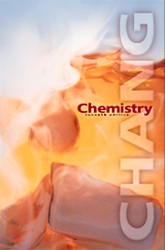|
 |  Chemistry, 7/e Raymond Chang,
Williams College
Physical Properties of Solutions
Internet Exerciseshttp://www.chemie.fu-berlin.de/chemistry/bio/aminoacid/phe_en.html
(http://www.chemie.fu-berlin.de/chemistry/bio/aminoacid/phe_en.html)
- Freie University of
Berlin's Chemistry department contains an index of amino acids that are linked
to a structure and a description of their physical properties. Learn more
about phenylalanine at this address: http://www.chemie.fu-berlin.de/chemistry/bio/aminoacid/phe_en.html.
- Identify the hydrophilic
parts of phenylalanine.
- Identify the hydrophobic
parts.
- Suppose you had
a mole of phenylalanine in a liter of water and a mole of NaCl in a liter
of water, and the two components were separated by a semi-permeable membrane.
At equilibrium, will the water level be greater in the phenylalanine side
or the NaCl side? Or will they be equal?
|
 |  |  | osmosis
(http://members.tripod.com/~urila/)
- The ChemTeam offers
tutorials on various subjects. Study the material provided on osmosis at the
address, http://dbhs.wvusd.k12.ca.us/ColligProp/Osmosis.html,
and answer the question below.
- If side A initially
had a 2 molar concentration of NaOH, what initial concentration of the
same compound would be needed to obtain the same result as shown in the
diagram at the bottom of the page?
|
 |  |  | http://www.chem.ualberta.ca/~plambeck/che/p101/p01034.htm
(http://www.chem.ualberta.ca/~plambeck/che/p101/p01034.htm)
- Read through the material
at http://www.chem.ualberta.ca/~plambeck/che/p101/p01034.htm
available on molar stoichiometry at the University of Alberta and answer the
following questions.
- Can a solution be
solid? If so, what would you define as the solvent?
- Suppose you went
to the dentist to get a tooth filled, and after telling him your interest
in the chemical composition of the fillings, he told you it was composed
of 0.05 g of silver and 0.1 g of mercury. Find the molality of the solution.
- Now, after having
your teeth filled, you see an assistant preparing a mouthwash of some
sort, pouring 2 moles of the cherry-flavored solute into a 250 mL bottle.
Calculate the molarity of the solution.
|
|
|



 2002 McGraw-Hill Higher Education
2002 McGraw-Hill Higher Education